Learn the Fretboard Like Joe Pass
This Joe Pass concept will help you always have a harmonic and melodic device close by.
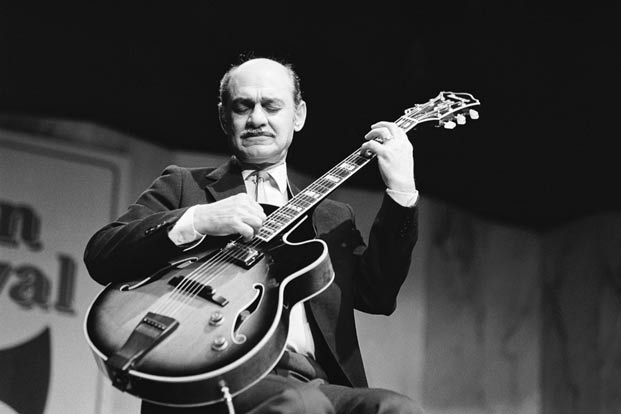
One of the biggest hurdles many jazz guitarists face early in their development is being able to connect chords, scales and arpeggios in their playing without having to jump all over the fretboard between shapes.
When I was first learning how to play jazz, one of the best lessons I ever learned came from a comment I read from Joe Pass.
To paraphrase Joe, he said, “Always know the possible soloing notes around any chord you’re playing so that you can quickly move between chords and single notes in your playing.”
After reading Joe talk about this concept, I began working on always having a scale and arpeggio under any chord shape I knew on the guitar, which greatly opened up my fretboard knowledge and helped me always have a harmonic and melodic device close by when playing over jazz tunes.
In this lesson, you will dig into this concept of applying scales and arpeggios to chord shapes, as well as learn how to practice this concept, explore sample shapes and learn a sample blues solo based on this Joe Pass fretboard concept.
Chord Scale Arpeggio Fingerings
The Joe Pass system of always having a scale and arpeggio under your fingers for every chord shape you use is a great way to learn the fretboard, providing you with soloing material at the same time. To help you get started with this system, here are a few examples of how to learn chords, scales, and arpeggios in one position on the guitar.
From here, you can apply this system to any chord type, maj7, m7, 7, m7b5, etc., and to any chord position as you expand upon this exercise in the woodshed. This first example shows a common Gmaj7 chord shape with the scale and arpeggio directly underneath that chord shape.
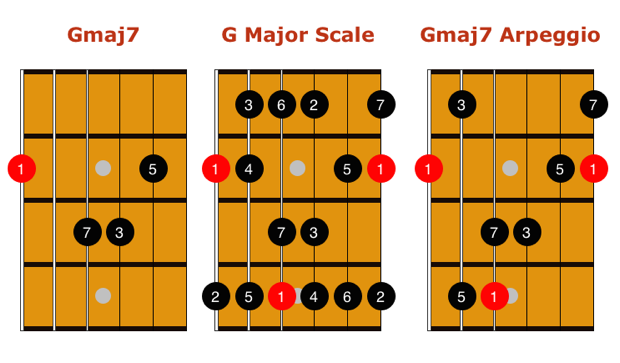
You can apply the chord, scale, arpeggio concept to any string set, such as the top four-string chord you see and hear in the next example. Here, you will fill out the scale and arpeggio based on the area surrounding the Gmaj7 chord at the start of the example.
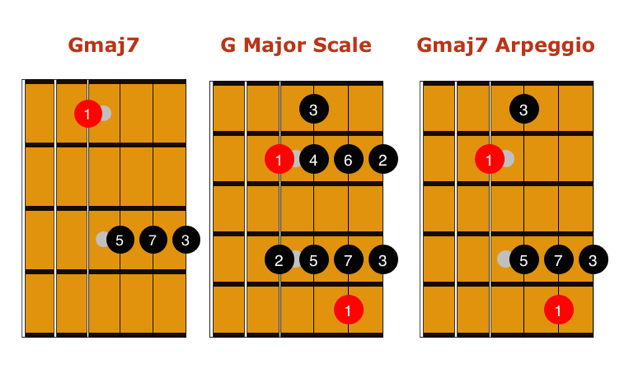
The final example shows a Gmaj9 chord, followed by the G major scale and Gmaj9 arpeggio. As well as applying this technique to maj7, m7, 7th, etc. chords, you can also apply them to 9th, maj9, maj6, 13th, 7#11 and any other chord extension you can think of on the guitar.
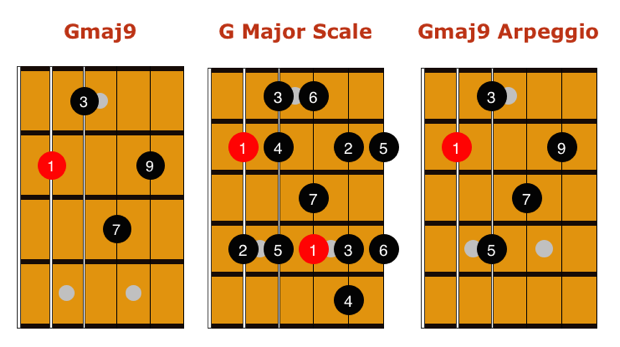
Chord Scale Arpeggio Exercises
Now that you know about the theory behind the "Joe Pass Chord, Scale, Arpeggio" approach and have checked out a few examples, here are a few exercises you can do in order to bring this technique into your practice routine.
- 1. Pick a chord shape you know, such as C7, in any position on the fretboard
- 2. Play that chord, and then work out the scale notes surrounding that shape on the guitar, so for C7 you would play C Mixolydian
- 3. Work out the arpeggio based around that chord shape, so for C7 you would play a C7 arpeggio
- 4. Once you have all three shapes, chord, scale, arpeggio, then you can move this to all 12 keys around the neck
- 5. Put on a C7 backing track and solo over that chord using the chord, scale and arpeggio you have worked out
- 6. Take the above five exercises to other chord types, shapes, string sets and keys, as you expand on this idea in the woodshed.
After doing these exercises with a few chords, you might find you will be able to visualize scales and arpeggios around any chord shape you are playing on the guitar. This is the ultimate goal of the system, to be able to visualize the scales and arpeggios in the moment around any chord shape you are playing on the guitar.
Chord Scale Arpeggio Blues Solo
To help you see and hear this system as applied to a musical situation, here is a sample blues solo in the key of Bb that brings together chords, scales and arpeggios over each change in the progression.
Here are the shapes used in the solo in order to check them out before you learn the entire 12-bar solo below. I’ve only written out the Eb7 shapes, as the F7 shapes are the same, just played two frets higher on the neck.
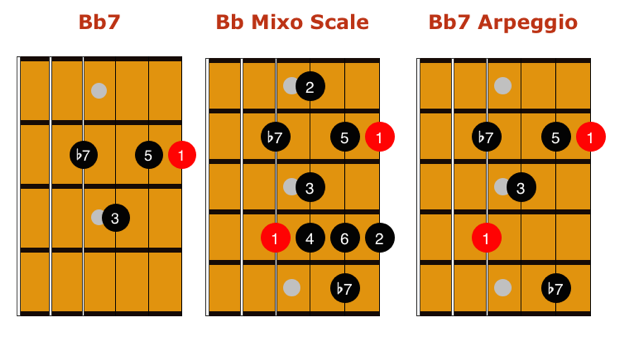
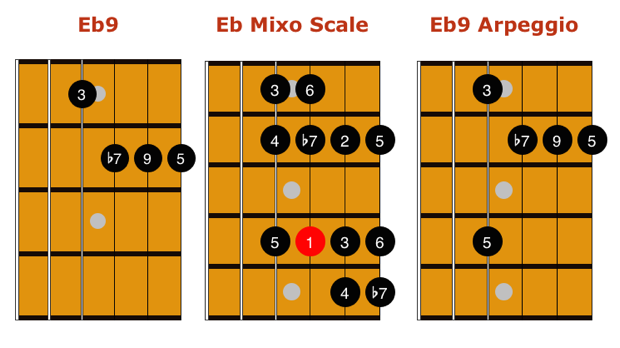
Once you have these shapes under your fingers, learn the solo below to see how I used these chords, scales and arpeggios to create a 12-bar blues solo in Bb.
When you have this sample solo under your fingers, put on a Bb blues backing track and try soloing with these shapes to create your own solos over the blues with this fretboard system.
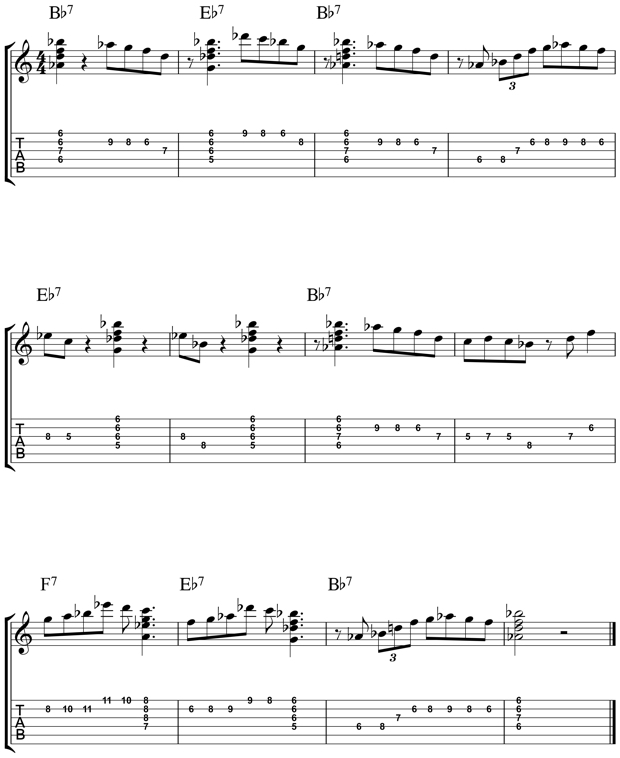
Matt Warnock is the owner of mattwarnockguitar.com, a free website that provides hundreds of lessons and resources designed to help guitarists of all experience levels meet their practice and performance goals. Matt lives in the UK, where he is a lecturer in Popular Music Performance at the University of Chester and an examiner for the London College of Music (Registry of Guitar Tutors).
Get The Pick Newsletter
All the latest guitar news, interviews, lessons, reviews, deals and more, direct to your inbox!
Matt Warnock is the owner of mattwarnockguitar.com, a free website that provides hundreds of lessons and resources designed to help guitarists of all experience levels meet their practice and performance goals. Matt lives in the UK, where he teaches Skype guitar students all over the world, and is an examiner for the London College of Music (Registry of Guitar Tutors).
“There are so many sounds to be discovered when you get away from using a pick”: Jared James Nichols shows you how to add “snap, crackle and pop” to your playing with banjo rolls and string snaps
Don't let chord inversions bamboozle you. It's simply the case of shuffling the notes around







![Joe Bonamassa [left] wears a deep blue suit and polka-dotted shirt and plays his green refin Strat; the late Irish blues legend Rory Gallagher [right] screams and inflicts some punishment on his heavily worn number one Stratocaster.](https://cdn.mos.cms.futurecdn.net/cw28h7UBcTVfTLs7p7eiLe.jpg)


